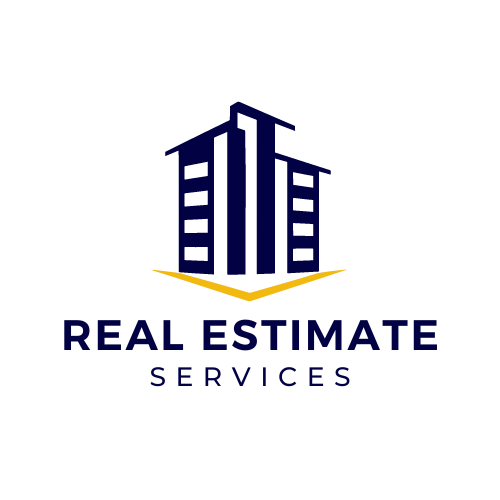Do you know if you’ve got 200 square feet of floor space, you can’t exactly buy 200 square feet of flooring? Yes, because the flooring material and the floor spaces don’t exactly go together. That’s where a lot of homeowners and contractors are confused on how much extra flooring to order for a project. Flooring estimation can be tricky, especially if you’re unfamiliar with the material you’re installing or the area in which you live.
When it comes to flooring estimates, most people assume that they are more accurate than they really are, and this leads to many mistakes that can cost you time and money when it comes to completing your project.
Working with flooring can be tricky, even when you’re the one doing the measuring and cutting. Be it a solid hardwood, vinyl, laminate, luxury plank, tile, or carpet; you’ve got to order some extra box or two.
And if your flooring project doesn’t come out perfectly, you could end up wasting money and time on something that didn’t work. To avoid this, it’s important to know how much extra material you should buy so that your project comes out perfectly every time.
Here we will take a look at some of the most common errors and how much extra flooring material you should order to compensate for these mistakes, cutting, and so you don’t end up with regrets later on in your project!.

Why should I buy extra when I know exact measurement?
You’ve finally decided to take the plunge and refinish your floors. Congratulations! Whether you’re going for hardwood, laminate, or vinyl, new floors can totally transform a room (or an entire house). But before you start tearing up your old flooring, there’s one important step you need to take: buying enough new flooring to avoid costly mistakes.
- The floor space and material won’t exactly match. For tiles that are 16 inch size will never fit in a space of 52 inches wide. For such, you need to buy an extra row of tile to cut and be part of flooring. Same stands true for carpet. You need to buy a roll of carpet 12 or 15 feet in width but your room won’t be exactly of this measurement.
- Natural flooring products have a few defective pieces in the delivery. So, you need to buy extra material to compensate those defective pieces. This is true for laminate or vinyl plank flooring.
- If you are hiring flooring installers, go for the higher excess amount. You don’t want them to stop working early due to materials being scarce.
- You may want to order more boxes if you bought the flooring locally, since you can often return it for a refund. As some retailers do not offer this (or may charge a restocking fee), be sure to check in advance.
- Additionally, if you bought the flooring online, you’ll need to pay for the shipping costs again. So, keep the excess figures to a minimum.

How much extra should I buy for flooring?
Well, it depends on the type of material and area of your flooring. As a rule of thumb, here’re the percentages you could use as a guide for buying extra flooring for different types:
- Solid hardwood: 20-percent – Unlike synthetic flooring, natural floors need to be purchased in greater extra to account for wastage (15% extra) and defective material (5% extra). That means you need to 120% of the flooring (for 450 square feet of floor area you need 540 square feet of flooring to order including 65 square feet for wastage and 23 square feet for defective material).
- Wall-to-wall carpet: 10-percent – Manufacturers recommend to buy extra along 10 or 15 feet long rolls.
- Luxury plank and laminate: 5- to 10-percent – It only accounts for cut edges as defective goods are rarely an issue with synthetic flooring.
- Tile: 5- to 15-percent – This account for wastage during cutting as well as tile breakage during transit.
Expected Flooring Installation Wastage
Flooring estimation help to immune to wastages. It is normal and expected in all sorts of projects. Wastage in flooring means cut or discarded sections of flooring that you can’t use on the project. Manufacturers typically set wastage factor at 5 to 20 percent depending on the type of flooring and the project.
Unlike windows and doors that you buy in numbers, flooring is set to always have a reference in terms of square footage. Moreover, all types of flooring needs cutting during installation. You need to fill the gaps along the walls or account for expansion. It is pertinent to mention that large planks and tiles have more wastage. Similarly, for rooms with obstructions with cabinets, vents, or toilets – do have more wastage factors.
Rooms that are square or rectangular require lower wastage numbers than rooms that are curved or have extra niches.
Key takeaways
Buying flooring can be confusing and frustrating because there are so many different types to choose from, and all the sizes are different in terms of installation and estimation.
It’s hard to estimate how much flooring you need and what size you should buy without flooring estimation, so you may end up wasting money on extra product or cutting pieces that don’t fit together properly because you didn’t account for wastage or measurement errors.
When buying flooring, add 20% to your total purchase as an extra safety net against mistakes to make sure you get exactly what you need without wasting any money or materials. If you’re still unsure about how much extra to buy, we’re here to help. Our flooring material estimators are expert in guiding you to minimize wastage and cuttings. They’ll help you in exactly measuring the area of flooring and will give you an accurate estimate for flooring, so you save money and time.
